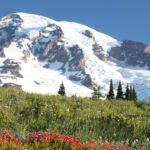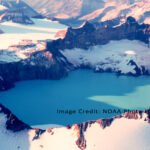Discover the wonders of Glacier Bay National Park in Alaska. Learn about its rich history, diverse wildlife, famous attractions, activities, accommodations, weather, and conservation efforts. Plan your perfect adventure today!
Table of Contents
Introduction to Glacier Bay National Park
Glacier Bay National Park, located in the southeastern part of Alaska, is a pristine wilderness teeming with natural beauty and ecological significance. Spanning over 3.3 million acres, this national park offers breathtaking landscapes, from towering glaciers and rugged mountains to lush forests and deep fjords. Whether you’re an avid adventurer or a nature enthusiast, Glacier Bay National Park promises an unforgettable experience with its stunning vistas and abundant wildlife.
History and Background
The history of Glacier Bay National Park is as rich and fascinating as its landscapes. Established as a national monument in 1925 and later designated a national park in 1980, Glacier Bay has long been a focal point for scientific research and natural preservation. The park is part of a UNESCO World Heritage Site, recognizing its global ecological significance. The region has also been home to the indigenous Tlingit people for thousands of years, who have a deep cultural connection to the land and its resources.
Biodiversity
Glacier Bay National Park is a sanctuary for diverse wildlife and plant species. The park’s marine environment is home to humpback whales, orcas, sea otters, and harbor seals. On land, you can spot black bears, brown bears, moose, and mountain goats. The park also supports a rich array of bird species, including bald eagles, puffins, and peregrine falcons. The diverse habitats, ranging from icy waters to alpine meadows, make Glacier Bay a haven for both flora and fauna.
Famous Attractions
One of the most famous attractions in Glacier Bay National Park is the Margerie Glacier, known for its striking blue ice and calving events. Johns Hopkins Glacier and Lamplugh Glacier are also must-see sights. The park’s glaciers are not only beautiful but also serve as critical indicators of climate change. The Glacier Bay Lodge and Visitor Center offers educational exhibits and stunning views of the surrounding landscapes. Don’t miss the chance to explore the serene waters of the park’s inlets and bays by boat or kayak.
Activities
There is no shortage of activities to enjoy in Glacier Bay National Park. Popular activities include guided boat tours, kayaking, and hiking. Whale watching is a particularly thrilling experience, with numerous opportunities to see these majestic creatures up close. For those who enjoy fishing, the park’s waters are rich with salmon and halibut. Birdwatching and photography are also popular, given the park’s diverse wildlife and stunning scenery. Whether you’re seeking adventure or relaxation, Glacier Bay has something for everyone.
Accommodations
While Glacier Bay National Park is remote, there are several accommodation options available. The Glacier Bay Lodge is the only hotel within the park, offering comfortable rooms and stunning views. For those who prefer a more rugged experience, there are several campgrounds and backcountry camping opportunities. Nearby Gustavus also offers a range of lodges, inns, and bed-and-breakfast establishments. Whether you choose a cozy lodge or a campsite under the stars, you’ll find a place to rest after a day of exploration.
Weather Conditions
Weather in Glacier Bay National Park can be quite variable, with conditions often changing rapidly. Summer temperatures range from 45°F to 65°F, making it the most popular time to visit. However, even in summer, visitors should be prepared for rain and cooler temperatures, especially when out on the water. Winters are cold and wet, with temperatures often below freezing and heavy snowfall. Always check the weather forecast before your trip and pack accordingly to ensure a safe and comfortable visit.
Tips for Visitors
To make the most of your visit to Glacier Bay National Park, consider these tips. Dress in layers to accommodate changing weather conditions and always bring rain gear. Book accommodations and tours well in advance, as the park is a popular destination, especially during the summer months. Respect wildlife by keeping a safe distance and following park regulations. Lastly, consider hiring a local guide to enrich your experience with expert knowledge of the park’s natural and cultural history.
Visitor Information
Glacier Bay National Park is accessible by plane or boat, with the nearest airport located in Gustavus, about 10 miles from the park. The park has no entrance fee, but some activities and guided tours may require reservations and fees. The Glacier Bay Visitor Center, located at Bartlett Cove, is a great starting point for your visit, offering maps, exhibits, and information on park activities and safety.
Click here to check the National Park Service website for the latest updates and visitor information.
Conservation Efforts
Conservation is a key priority in Glacier Bay National Park. The park’s management focuses on preserving its pristine ecosystems and protecting its wildlife. Efforts include monitoring glacier activity, studying climate change impacts, and implementing sustainable tourism practices. The park also collaborates with the indigenous Tlingit community to integrate traditional ecological knowledge into conservation strategies. These efforts ensure that Glacier Bay remains a thriving natural sanctuary for future generations.
Glacier Bay National Park is a true gem in Alaska’s crown, offering unparalleled natural beauty, rich history, and diverse wildlife. Whether you’re marveling at massive glaciers, spotting a humpback whale, or simply soaking in the serene landscapes, a visit to Glacier Bay is an adventure you’ll never forget. With careful planning and respect for the park’s delicate ecosystems, you can enjoy an unforgettable experience in one of the world’s most pristine wilderness areas. Plan your trip today and discover the magic of Glacier Bay National Park.








1 thought on “Explore Glacier Bay National Park: Your Ultimate Guide to Alaska’s Pristine Wilderness”